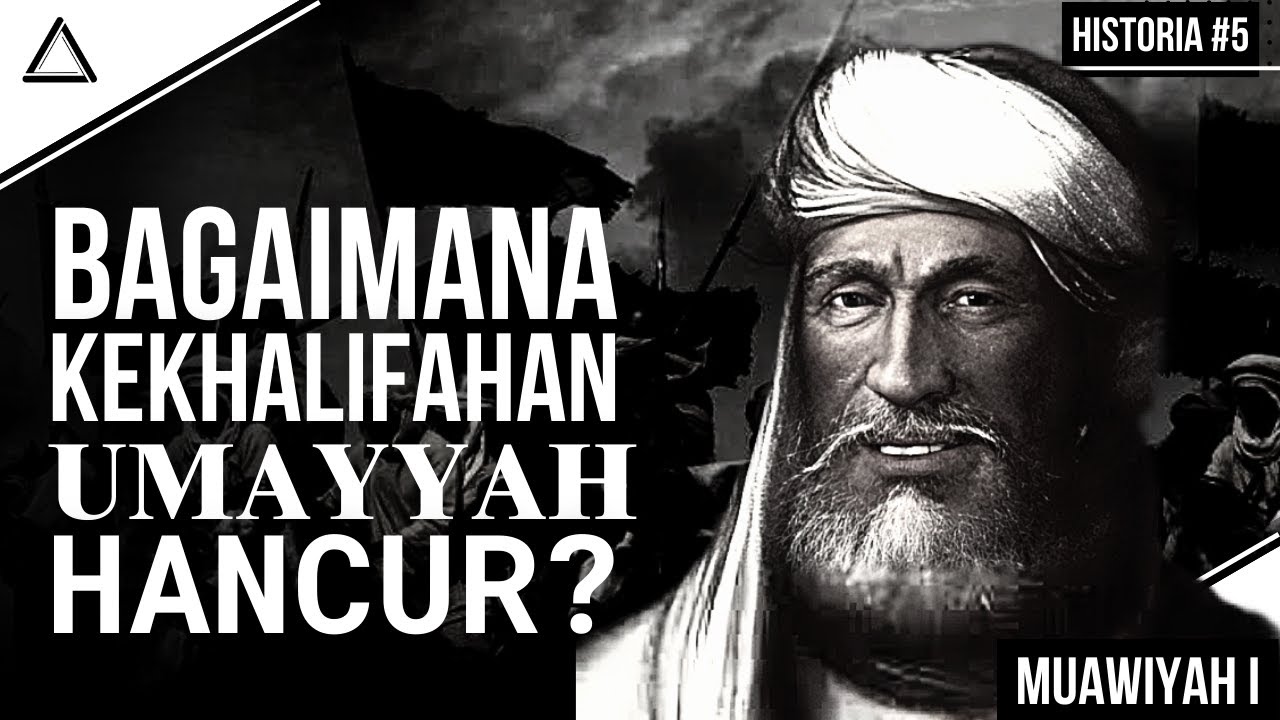PERANG SAUDARA PALING BERDARAH SESAMA MUSLIM,SATU DINASTI DIHABISI PERTEMPURAN SUNGAI ZAB @adupukul
Summary
TLDRThe script delves into the internal conflicts that led to the rise of the Abbasid dynasty, beginning with the overthrow of the Umayyad caliphate in the 8th century. It details the Abbasid revolt, driven by corruption under the Umayyads, discrimination against non-Arab Muslims (mawali), and the desire for leadership from the Prophet Muhammad's family. The pivotal Battle of Zab in 750 marked the end of the Umayyad rule, with the Abbasids establishing their caliphate. The narrative also touches on the mass killings of the Umayyad family, the survival of Abd al-Rahman I, and his establishment of Islamic rule in Al-Andalus.
Takeaways
- 😀 The civil war and bloodshed throughout Islamic history were often driven by struggles for power, notably during the Abbasid and Umayyad dynasties.
- 😀 The rise of the Abbasid dynasty is linked to a rebellion against the Umayyad dynasty, which was viewed as corrupt and disconnected from the Prophet Muhammad's direct lineage.
- 😀 The Abbasid revolt began when Abu Abbas as-Saffah, a descendant of the Prophet Muhammad's uncle, opposed the Umayyad rule and gathered support from various groups.
- 😀 One major cause of the rebellion was the widespread corruption among Umayyad governors, who were seen as prioritizing personal interests over the well-being of the people.
- 😀 The Umayyads were criticized for not being direct descendants of the Prophet Muhammad, which fueled Abbasid support as they claimed closer ties to the Prophet's family.
- 😀 Discrimination against non-Arab Muslims (mawali) by the Umayyads, such as being excluded from high positions and forced to pay jizyah, further intensified resentment.
- 😀 The Abbasids promised a more equitable society and hinted at elevating the descendants of Ali, which gained them widespread support, especially from religious groups.
- 😀 In 749, the Abbasid army, led by as-Saffah, won a decisive victory over the Umayyads in the Battle of Zab, marking the end of the Umayyad Caliphate.
- 😀 After the battle, many members of the Umayyad family were killed, but one survivor, Abd al-Rahman I, escaped and eventually founded the Islamic kingdom in Al-Andalus (Spain).
- 😀 The Battle of Zab in January 750, fought near the Tigris River, solidified the Abbasid's control over the Islamic empire, which lasted until the 13th century.
Q & A
What was the cause of the civil war and bloodshed in the early Islamic empires?
-The civil war and bloodshed were primarily caused by the power struggle for the Islamic Caliphate, beginning with the Umayyad dynasty's rule and continuing into the Abbasid and Ottoman periods.
Who was Abu Abbas al-Saffah and what role did he play in the Abbasid uprising?
-Abu Abbas al-Saffah was a descendant of the Prophet Muhammad's uncle, Abbas bin Abdul Muttalib. He led the Abbasid revolt against the Umayyad dynasty in the mid-8th century, eventually establishing the Abbasid Caliphate.
What triggered the revolt against the Umayyad dynasty?
-The revolt was triggered by widespread dissatisfaction with the Umayyad dynasty, particularly due to the corruption of Umayyad governors and their self-serving actions, as well as the perception that the Umayyads were not direct descendants of Prophet Muhammad.
How did the Abbasid dynasty gain support for their cause?
-The Abbasid dynasty gained support through promises of a more equitable society, offering better treatment for non-Arab Muslims (mawali) and ensuring that descendants of Ali would have a more prominent role in the Islamic government.
What was the significance of the Battle of the Zab?
-The Battle of the Zab, fought in January 750, was pivotal in ending the Umayyad Caliphate and marking the rise of the Abbasid Caliphate. The Umayyad forces were decisively defeated, and the last Umayyad caliph, Marwan II, was overthrown.
What strategic advantage did the Abbasid forces have in the Battle of the Zab?
-The Abbasid forces used a formation of spears that effectively countered the cavalry charges of the Umayyad forces. This strategic advantage contributed to the disarray and eventual defeat of the Umayyad army.
What happened to the Umayyad Caliph after the Abbasid victory?
-After the Abbasid victory, the last Umayyad Caliph, Marwan II, fled but was captured and killed while trying to find refuge in Egypt. This marked the end of the Umayyad dynasty's rule in the East.
What was the fate of the Umayyad family following their defeat?
-Following their defeat, most members of the Umayyad family were killed in a mass execution. However, one survivor, Abd al-Rahman ibn Muawiya, managed to escape and eventually established the Umayyad Caliphate in al-Andalus (Spain).
Why was the Abbasid dynasty seen as more legitimate compared to the Umayyads?
-The Abbasid dynasty was seen as more legitimate because they claimed descent from the Prophet Muhammad's uncle, Abbas, and presented themselves as closer to the Prophet's family than the Umayyads, who were not direct descendants of the Prophet.
How did Abd al-Rahman ibn Muawiya contribute to the history of the Umayyads?
-Abd al-Rahman ibn Muawiya survived the Abbasid purge, escaping to North Africa and then to Andalusia, where he established an Umayyad Caliphate that ruled over Spain, continuing the Umayyad legacy in the West.
Outlines

This section is available to paid users only. Please upgrade to access this part.
Upgrade NowMindmap

This section is available to paid users only. Please upgrade to access this part.
Upgrade NowKeywords

This section is available to paid users only. Please upgrade to access this part.
Upgrade NowHighlights

This section is available to paid users only. Please upgrade to access this part.
Upgrade NowTranscripts

This section is available to paid users only. Please upgrade to access this part.
Upgrade NowBrowse More Related Video

Sejarah Lahirnya Daulah Bani Umayyah di Andalusia | Materi SKI MA Kelas X

Mengenal Daulah Abbasiyah

Berdirinya Daulah Bani Umayyah - Serial Daulah Bani Umayyah (Part.1)

Sejarah Bangkit Dan Jatuhnya Kekaisaran Islam TERLUAS Di DUNIA | Kekhalifahan Umayyah | Historia #5

Dinasti Umayyah di Andalusia

Lahirnya Daulah Umayah di Andalusia
5.0 / 5 (0 votes)